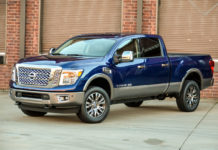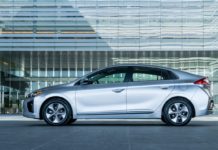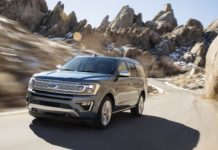The Detroit Motor Show — which opened for previews this week — has put a spotlight on the looming battle for supremacy in the fast-growing market for green cars, especially between US and Asian auto makers.
With a rise in worldwide concern over global warming and soaring oil prices, carmakers from every country have accelerated their investments into producing cars with improved fuel efficiency and reduced harmful emissions.
The whole range of new green car technologies is on show at the annual Detroit exposition, the world's biggest auto show: standard hybrids, plug-in hybrids, electric motors, fuel cell vehicles, and flex-fuel engines that will burn biofuels like ethanol and even fuel made from urban waste.
New green car technologies are a “business necessity and an obligation for society,” said General Motors chief Rick Wagoner during previews of the show, which opens to the public from January 19 to January 27.
“The demand for energy around the world is growing faster than supply,” he said. “We need to develop alternative sources of propulsion.” Wagoner called for the US government to accelerate construction of the infrastructure necessary to support an entire new generation of environmentally-sensitive vehicles.
Among the US auto manufacturers, GM has launched an offensive in the green car market — even as it has joined the others in resisting tighter regulations on emissions.
In Detroit, GM announced that it would launch a plug-in hybrid as soon as 2010 — the Saturn Vue sports utility vehicle — and also by the same date offer a fully electric car, the Chevy Volt, after an abortive first try in 2003.
Chrysler, slow to get on the green bandwagon, has presented three prototype green cars in Detroit. And Ford announced two hybrids for the end of 2008 and the accelerated development of cars with better fuel economy by 2012.
But all of them face the formidable Japanese giant Toyota — now the number two auto-seller in the US market, after GM and ahead of Ford.
Toyota has stolen a strong lead in the green car market with its hybrid Prius, now on the market for ten years.
In Detroit, Toyota presented its new rechargeable hybrid, and announced projects to develop other clean-auto technologies.
Still up for grabs is the half of the US market that is dominated by inefficient, polluting SUVs and pick-up trucks — segments which have proven extremely profitable for US carmakers.
The Detroit show made clear that all carmakers, especially Asian companies, are working on clean diesel, hybrid and flex-fuel versions of their SUVs and trucks.
Even China, with its ambition to get a foothold in the US auto market, has introduced sedan and SUV models, developed by their own research teams with the backing of Japanese or other foreign partners.
The promise and challenge of the green market comes as US manufacturers struggle to get back on their feet after sweeping losses and retrenchments.
Ford announced that its plan to return to profitability in 2009 was progressing well, while GM said it would reap the benefits of its efforts, and Chrysler talked up its own progress.
But all the excitement about the US market pales in the face of the looming economic slowdown and possibly recession in 2008, a result of higher oil costs, the crash of the real estate market and the resulting fallout in the banking sector.
Both US and Japanese automakers said 2008 would be difficult with contracting demand.
But European builders remained relatively optimistic for 2008 in the United States, with attractive new models in both the mini-car and luxury segments, and a rising demand for their diesel cars.








